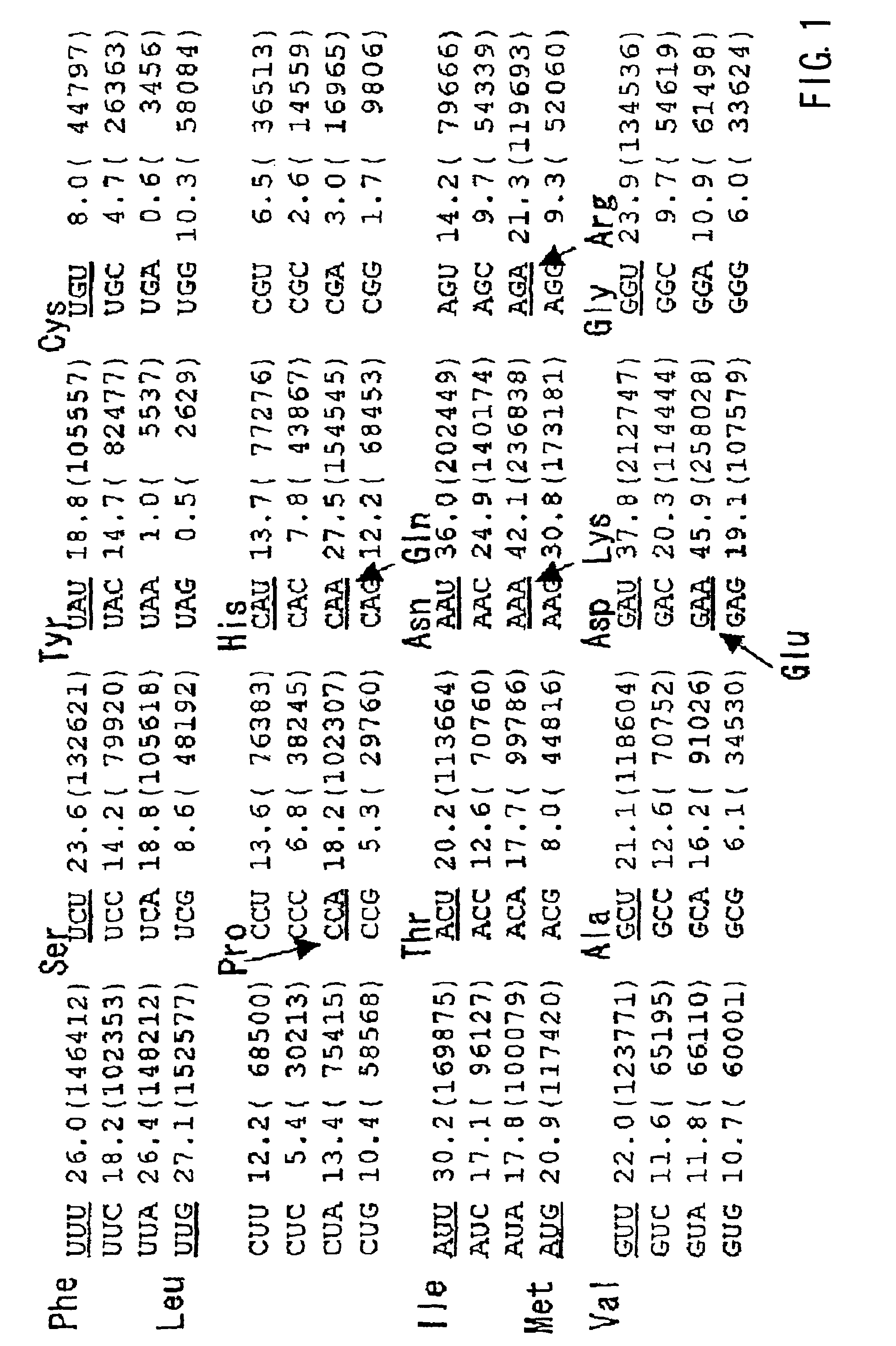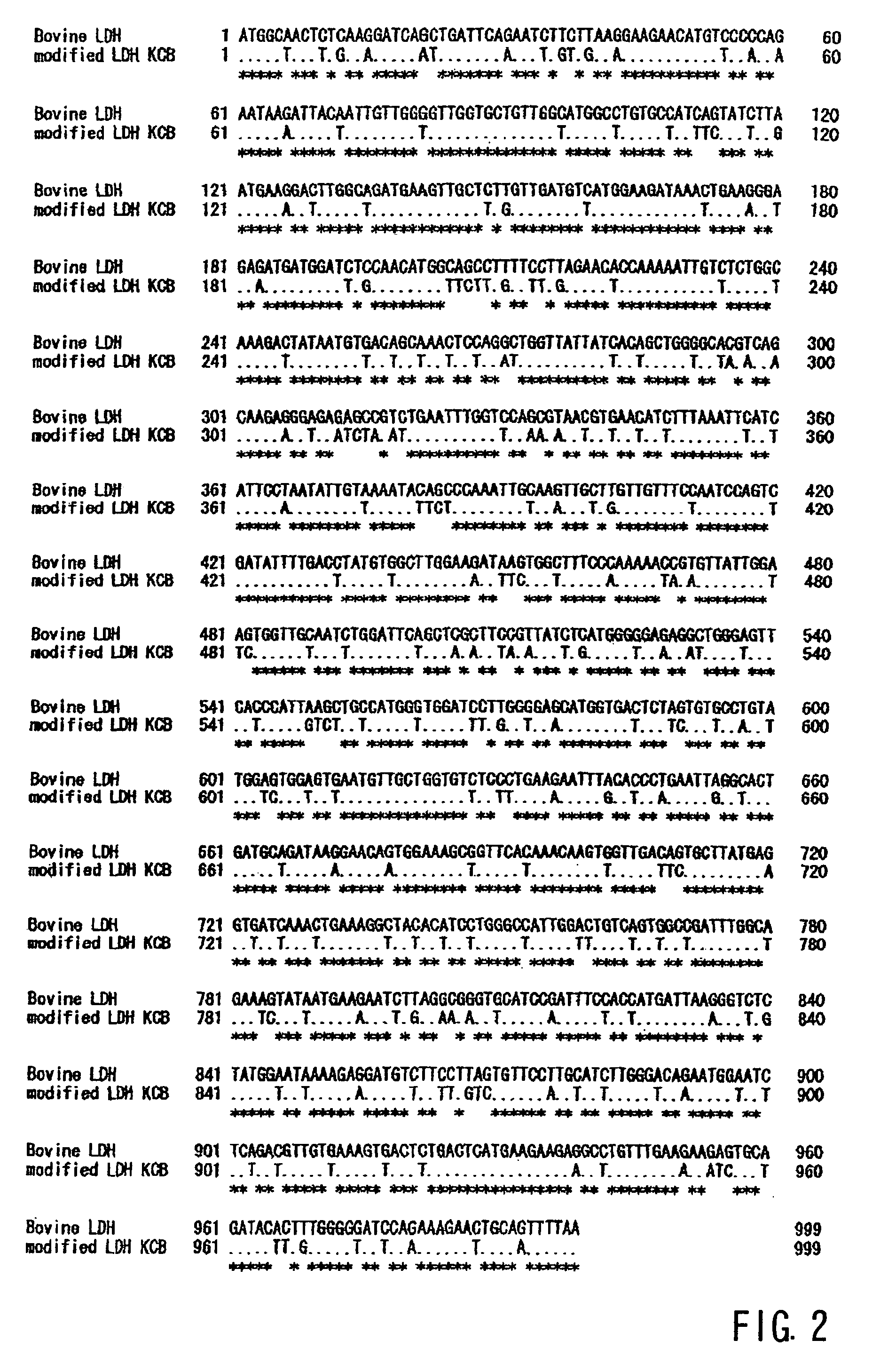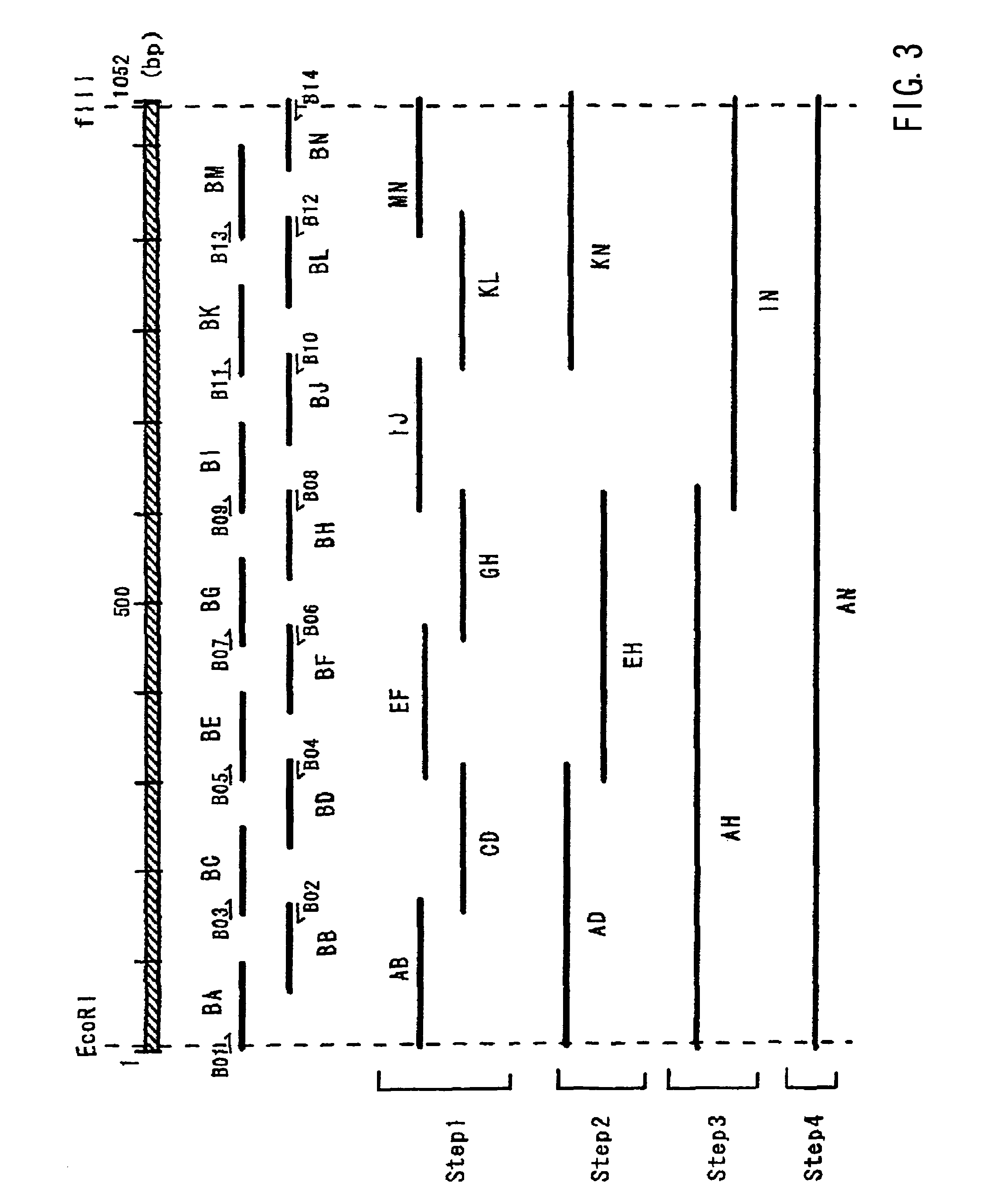Method of controlling ethanol production and mass production of lactic acid and transformant therefor
a technology of lactic acid and ethanol production, which is applied in the field of control of lactic acid production and highproductivity technology, can solve the problems that the technology of producing lactic acid in high volume inside i>saccaromyces cerevisiae/i> has not been perfected, and achieves the effects of high volume, stable production of lactic acid, and higher substrate affinity
- Summary
- Abstract
- Description
- Claims
- Application Information
AI Technical Summary
Benefits of technology
Problems solved by technology
Method used
Image
Examples
embodiment 1
Design of the DNA Sequence of L-lactate Dehydrogenase Gene
[0102]In order to efficiently produce L-lactate dehydrogenase, which is derived from bovine, a high eucaryote, in the Saccaromyces cerevisiae family of yeast, we designed a new, non-naturally occurring gene sequence for the DNA that codes the amino acid sequence of the bovine-derived L-lactate dehydrogenase.[0103]1) The codon that is often used in Saccaromyces cerevisiae was used.[0104]2) Kozaks sequence (ANNATGG) was added straddling the start codon.[0105]3) Unstable sequences and repeated sequences in mRNA were eliminated as much as possible.[0106]4) The GC content deviation was made uniform over the entire region.[0107]5) Measures were taken to ensure that restriction enzyme sites, not suitable to gene cloning, would not be created inside the designed sequence.[0108]6) Restriction enzyme EcoRI, XhoI, and AflIII sites, which are useful for the two ends to be incorporated into the chromosome incorporation type vector, were a...
embodiment 2
Complete Synthesis of the LDHKCB Sequence
[0112]In this embodiment, the method of Fujimoto et al. was used, which is a known method for synthesizing long-chain DNA (Hideya Fujimoto, Synthetic Gene Creation Method, Plant Cell Engineering Series 7, Plant PCR Experiment Protocol, 1997, Shujunsha Co., Ltd., p95-100). The principle behind this method is as follows: oligonucleotide primers of around 100 mer are created so as to have an overlap of between 10 and 12 mer at the 3′ end. Then, the missing area is extended using the overlapped region between the oligonucleotide primers, and is amplified through a PCR using the primers at both ends. This operation is sequentially repeated to synthesize the target long-chain DNA. For the PCR amplifier, Gene Amp PCR system 9700 (P.E. Applied Biosystems Inc.) was used.
[0113]Specifically, the two kinds of oligonucleotide primers to be linked were mixed first, and a DNA extension reaction was carried out at 96° C. for 2 minutes, 68° C. for 2 minutes, ...
embodiment 3
Construction of a Vector for Yeast Chromosome Incorporation
[0115]A yeast chromosome incorporation-type vector was constructed using the LDHKCB sequence completely synthesized in Embodiment 2. This vector is referred to as pBTRP-PDC1-LDHKCB and its plasmid map is shown in FIG. 4.
1. Isolating PDC1P Fragments for Constructing pBTrp-PDC1-LDHKCB
[0116]PDC1P fragments were isolated by means of the PCR amplification method that uses the genome DNA of the Saccaromyces cerevisiae YPH strain (Stratagene Corp.) as the mold.
[0117]The genome DNA of the Saccaromyces cerevisiae YPH strain was prepared using the Fast DNA Kit (Bio 101 Inc.), which is a genome preparation kit, and according to the detailed protocol described in the appendix. DNA concentration was measured using the spectrophotometer Ultro spec 3000 (Amersham Pharmacia Biotech Inc.).
[0118]For the PCR, Pyrobest DNA Polymerase (Takara Shuzo Co., Ltd.), which is said to produce highly precise amplified fragments, was used as the amplifica...
PUM
| Property | Measurement | Unit |
|---|---|---|
| Affinity | aaaaa | aaaaa |
Abstract
Description
Claims
Application Information
 Login to View More
Login to View More - R&D
- Intellectual Property
- Life Sciences
- Materials
- Tech Scout
- Unparalleled Data Quality
- Higher Quality Content
- 60% Fewer Hallucinations
Browse by: Latest US Patents, China's latest patents, Technical Efficacy Thesaurus, Application Domain, Technology Topic, Popular Technical Reports.
© 2025 PatSnap. All rights reserved.Legal|Privacy policy|Modern Slavery Act Transparency Statement|Sitemap|About US| Contact US: help@patsnap.com



